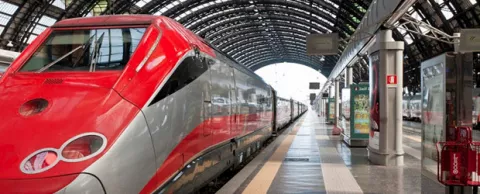
It's not a big surprise: mass transit ridership has been dropping off in recent years, particularly for buses and light rail, in many cities in the U.S. It's discouraging for cities that envision becoming smart cities to find that one of their primary tools for making their environment more livable, workable and sustainable is losing favor with citizens. In other words, mass transit as a solution to reduce traffic congestion and air pollution and provide a convenient way to get around town isn't going to be as effective as it could be if fewer people are using it.
The story below, based on a study of available research from transit reform advocacy organization TransitCenter, sheds light on the reasons for transit's fading popularity in many cities — but underscores the need for more localized research on the external factors that affect transit ridership. The story also briefly describes the potential of Mobility-as-a-Service (MaaS) as an option cities could use to adapt to the many changes taking place in transportation and mobility. — Doug Peeples
Overall mass transit ridership was lower in the U.S. in 2017 than it has been in several years. Most of those empty seats were on buses and light-rail, even in cities considered to be major transit markets like Philadelphia and Chicago.
But why?
The TransitCenter study of available research turned up several likely reasons that explain why ridership is down, but stressed that at additional research is needed to support and verify them and that some assertions are questionable. For instance, one source used in the TransitCenter study said cheap gas prices are a minor issue, compared to others — such as the availability of parking.
Here are brief descriptions of some study highlights:
- Transit ridership is connected to "the cost competitiveness of driving." In other words, people will weigh options in terms of cost, time and other factors like traffic conditions and, as noted above, available parking.
- Transportation network companies (TNCs) like Uber and Lyft are often blamed for taking a big bite out of transit ridership, but the TransitCenter didn't find enough hard data for a definitive conclusion. Other sources cite ride-sharing as another option luring transit riders away from their buses and trains.
- Higher average transit fares affect ridership, and spendier monthly passes aren’t the cost-effective options they once were. The study also noted increased telecommuting — working from home — as another reason for the reduction in monthly transit pass users.
- Riders want frequent, reliable service. The bus needs to show up on time. The study cited transit planner Jarrett Walker's blunt common sense advice: "If you want ridership, you have to run service." The lack of reliable, quality service has been cited as a primary reason for falling transit ridership by numerous other sources.
The study also offered advice for cities and transit agencies, specifically: "… transit agencies should not blame declining numbers or pin ridership retention on conditions out of their control. Agency leaders who focus on improving their transit service's speed, reliability, affordability and accessibility will provide better service — and be rewarded with more riders."
A few words on a 'trending' solution
While the TransitCenter study makes it clear there is much to learn about transit ridership, demographics and external influences, there are possibilities on the horizon that may be able to help bring the disparate elements of urban transportation together. Some cities have built or are building transportation hubs where all forms of urban transportation converge and make it convenient for riders to move from one to another to reach their destinations. And it may be that Mobility-as-a-Service will be a Next Big Thing. As Mass Transit Magazine explains, MaaS is a digitized system that connects travelers to all urban transportation options — from bike sharing to Uber to the bus and more — via their smartphone apps.
As Council Global Lead Partner Deloitte explained in a publication it produced a year ago, once MaaS gets beyond the pilot stages there could be a number of compelling benefits for cities and citizens — in the form of a unified transportation network.
Doug Peeples is a Portland, Oregon-based writer specializing in technology and energy. Follow @smartccouncil on Twitter.



